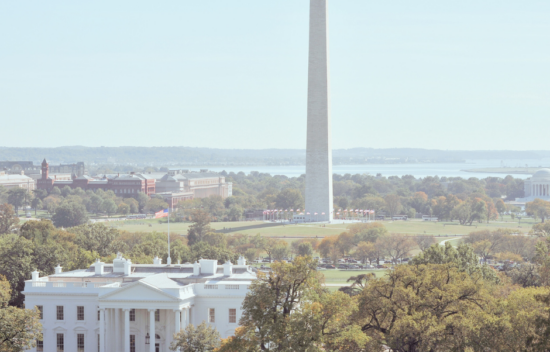
Healthy Tension through Checks and Balances
Guiding Questions
- How do the three branches of government interact to create a system of checks and balances?
- How does this system ensure the effective functioning of representative government?
Objectives
- Students will explore case studies of each branch asserting its constitutional powers to check another branch.
- Students will understand how a system of checks and balances helps uphold a representative government.
Engage
- Begin class by writing the definition of checks and balances on the board: “Constitutional powers are distributed among the branches of government allowing each to limit the application of power of the other branches and to prevent expansion of power of any branch.”
- Ask students to name a few examples of checks and balances within our constitutional system. Discuss the concept of deliberative government and how having a slow-moving system with branches not always working with each other is a feature, not a flaw, of our system. Checks and balances create “healthy tension” where each branch of government works to exercise its authority to prevent the other from becoming too powerful. This system protects liberty and prevents tyranny from a single branch.
- Scaffolding Note: Use the following questions to help guide students.
- Checks and Balances in Action – Can you name some examples of how one branch of government has checked the power of another branch? (Example: Congress overriding a presidential veto, the Supreme Court striking down a law, or the president appointing justices.)
- Deliberative Government – Why do you think our government was designed to move slowly, with branches sometimes opposing each other, instead of making decisions quickly?
- Healthy Tension in Government – How does the constant push and pull between the branches of government help maintain balance and prevent any one branch from gaining too much power?
- Protection Against Tyranny – How do checks and balances help protect individual freedoms and prevent a single person or group from taking complete control of the government?
- Transition: Today, we are going to look at a few examples from history of when a branch of government asserted or tried to assert its powers to check another branch of government. Specifically, we will look at the legislative branch’s power to amend the Constitution and to impeach and remove members of government from office, the executive’s veto power, and the Supreme Court’s power to review the constitutionality of laws and actions by the other branches.
Explore
- Distribute Healthy Tension Through Checks and Balances Case Studies Essay and Healthy Tension Through Checks and Balances Graphic Organizer
- Tell students to fill out the graphic organizer as they read.
Scaffolding note: Use a system of gradually reduced support. Begin by reading Case Study A aloud and completing the organizer together. Then, partner students to complete Case Study B. Finally, ask students to complete Case Study C independently.
Assess & Reflect
- Once students are finished reading, lead a class discussion on how they believe each case study demonstrated the system of checks and balances upholding our constitutional system of representative government.
- Here are example questions to use to start the discussion:
- How did the actions in this case study demonstrate the system of checks and balances? Which branches were involved?
- What might have happened if a branch had not exercised its check on power?
- Do you think this case study shows the system working effectively? Why or why not?
- How does this example reinforce the idea that checks and balances help protect our constitutional system?
Extend (Optional)
- Have students find their own historical example of a branch checking another. Have them write a short essay explaining the events that occurred, the constitutional power asserted, and how it helped maintain a system of “healthy tension.” Examples include:
- War Powers Act of 1973
- Marbury v. Madison (1803)
- Impeachment of President Andrew Johnson
- President Grover Cleveland’s Veto of the Texas Seed Bill